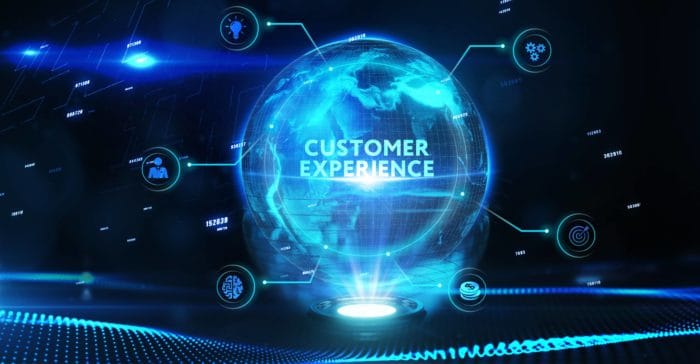
Digital customer behavior
Travers and Milgram introduced the concept of six degrees of separation from their experiment on how people are connected with the use of old-fashioned letters. The experiment found that the number of degrees of separation between one random person and another was six. The concept of six degrees of separation suggests that we are living in a small world we know someone who knows that person.
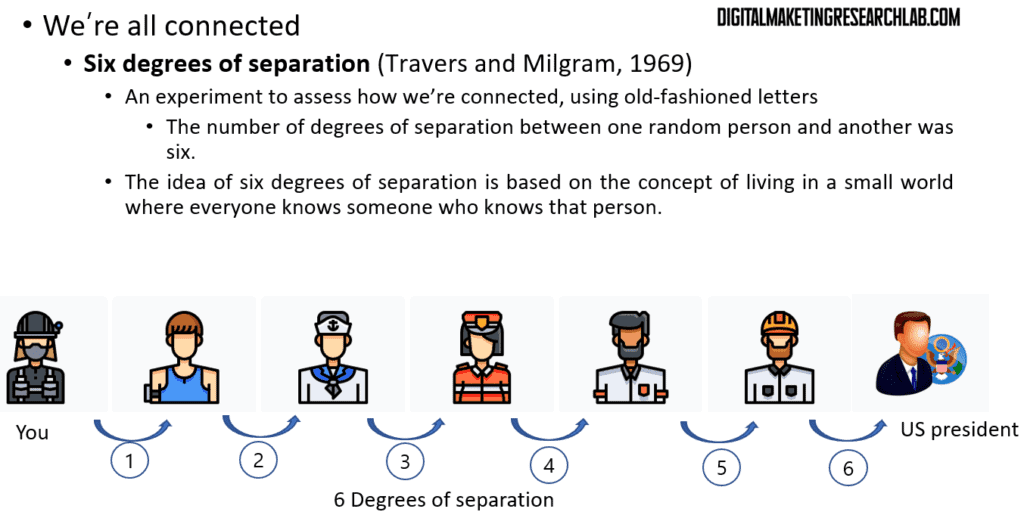
Changing digital consumer behavior
The digital environment has brought about changes in customers’ behaviors, too.
In the past, companies or organizations controlled their messaging, brand, and information, which enabled them to take power in the relationship with audiences. However, the advance in digital technology has allowed consumers to raise their voices or initiate conversations with organizations. Thus, the digital setting has witnessed the power moving from companies to consumers
These days, customers also watch a TV screen (or their laptop) while messaging friends on their mobile and using a tablet to search for the content mentioned on the program. These behaviors are called second screening, dual screening, media meshing, solarizing, or connecting media

With the advent of the digital environment, the retail sector is also experiencing changes in customers’ behaviors. As e-commerce is more prevalent, more and more consumers check out items in-details at physical stores and buy the item online. This consumer behavior is referred to as showrooming. Consumers engage in showrooming because it is easy to search and quick to find information at retail stores while online stores offer better prices.
In contrast to showrooming, some customers engage in webrooming where they do search online and buy offline. It is because those consumers are less confident in buying online and purchasing offline reduces the risk of buying online. Also, few options available at offline stores make it easy to make a decision on what to buy.
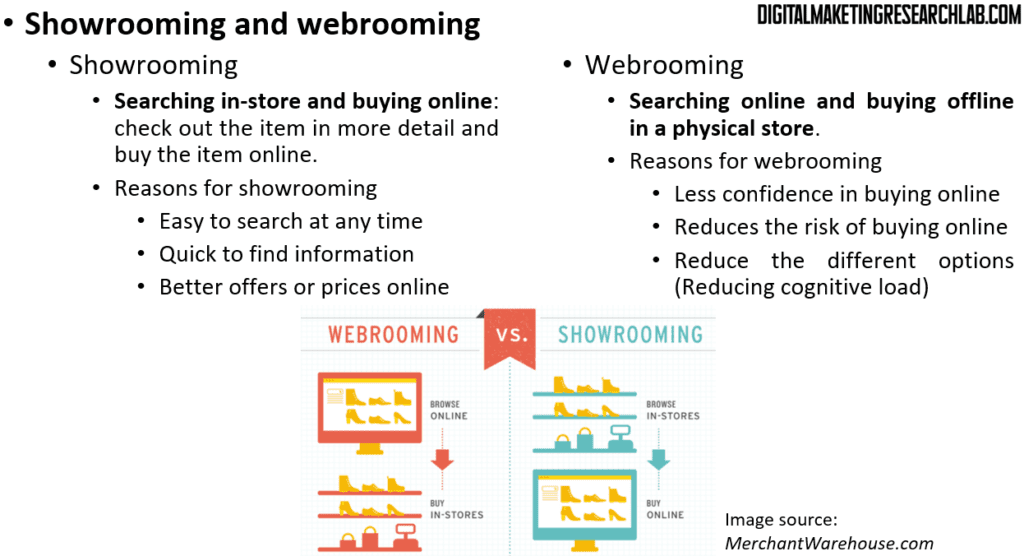
Then, how would companies address showrooming and webrooming? To address these issues Ralph Lauren has implemented creative tactics. First, as a solution to showrooming, Ralph Lauren incorporated coffee shops and restaurants in their flagship stores to encourage shoppers to stay longer and complete the purchase. Next, to address webrooming, Ralph Lauren introduced the ‘RL Virtual Experience’. It provides 360-degree walkthroughs of flagship stores, with opportunities to ‘add to cart’ along the virtual journey.
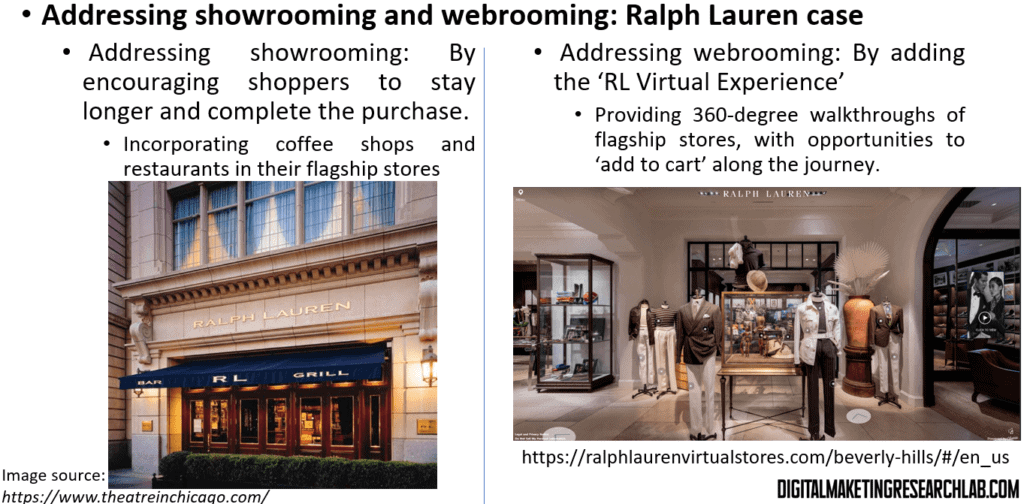
Digital technology has brought about changes in the concept of consumption. Traditionally, the concept of solid consumption has prevailed where access to the products is enduring, ownership-based, and tangible. However, we are currently witnessing the emergence of liquid consumption where access to the products is ‘ephemeral, access-based, and dematerialized’ such as car sharing. Furthermore, liquid consumption takes a form of dematerialization where non-physical goods are consumed such as streaming music via Spotify. In the digital economy, consumers, in some cases, place greater emphasis on access than physical ownership.

Sharing economy
As liquid consumption is gaining more popularity, sharing economy has started to entrench in our society. Sharing economy refers to a temporary peer-to-peer exchange accessed via technology. Typically, three parties are involved in sharing economy, including the platform operator (such as Airbnb), the provider offering the service, and the consumer. The connections between service providers and consumers are not one-to-one but from many to many, and thus platformmediates multiple service providers and consumers.

Consumption in sharing economy is basically collaborative consumption. People are sharing with strangers and coordinating the acquisition and distribution of a resource for a fee or other compensation.
There are two factors for success in collaborative consumption: critical mass and social proof. First, enough people should join the platform (i.e., critical mass) and potential community members should have heard, seen, or read about others using the platform (i.e., social proof)
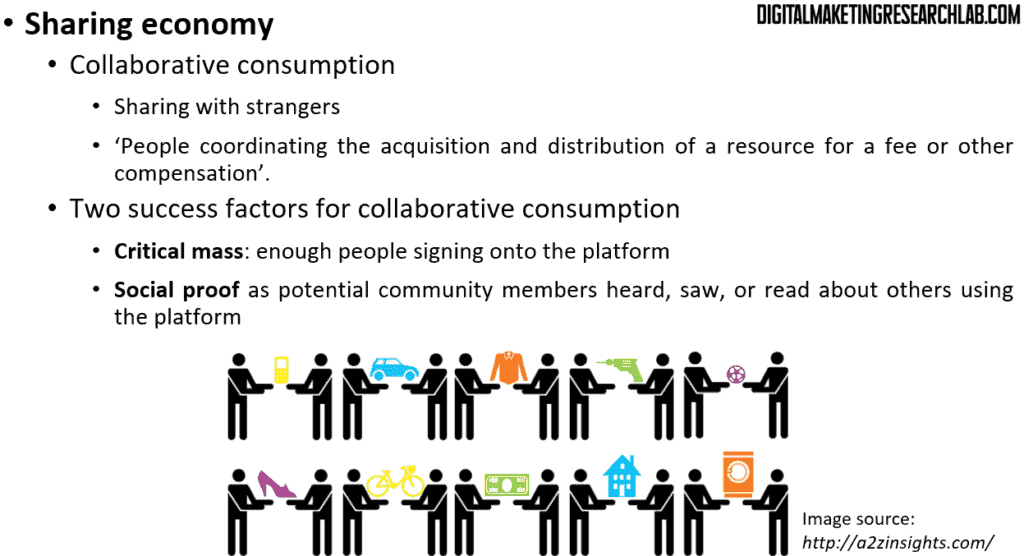
Then why do people share? They share to save money, interact as part of a community, and support sustainable consumption as a social cause.
As digital consumers can engage in producing as well as consuming, a new term, prosumer, was introduced combining the words ‘producer’ and ‘consumer’.
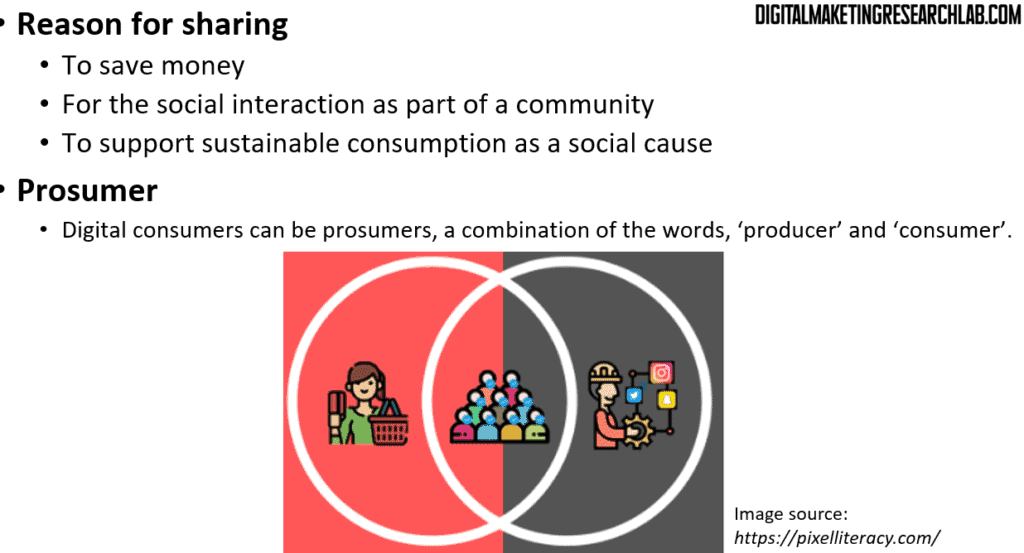
Customer experience
With the introduction of multiple online channels by companies, customers have various customer experiences with companies at multiple touch points. Customer experience is a multi-dimensional construct that involves cognitive, emotional, behavioral, sensorial, and social components.
Interactions between organizations and customers, which take place occur in multiple channels, are critical because they have significant effects on customers’ behaviors including purchase
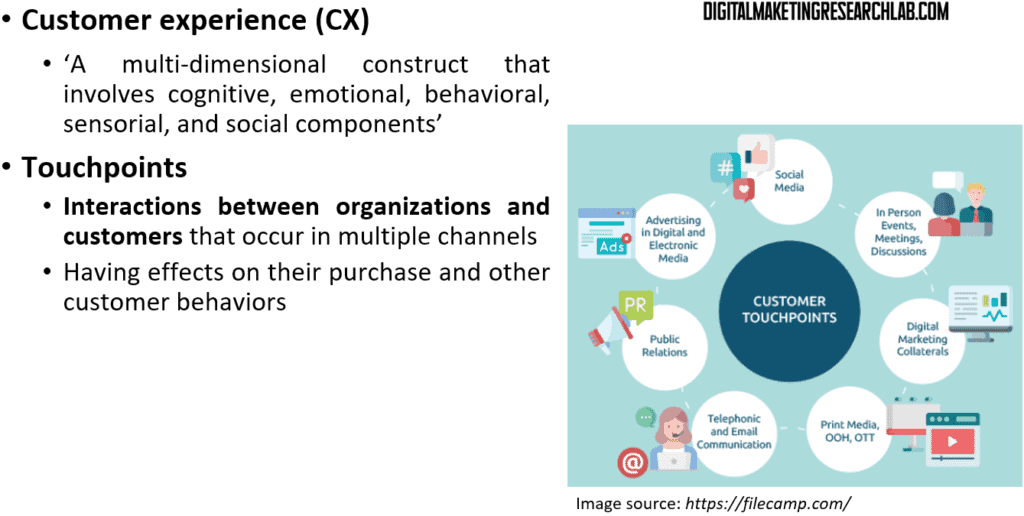
Customer journey
Customers usually go through five main stages from awareness to retention, and this customer journey can be visualized as a funnel. Customer journeys should be seamless, effortless, or frictionless enough to provide a good customer experience.
Let’s break down the customer journey into five stages. It starts from an ‘awareness’ state where consumers become aware of a problem they want to solve and perceive a product as a potential solution. Next, customers move to an ‘interest stage’ where they look for options that will help solve their problems. Also, they seek more information to make a decision. When consumers have enough information, they move on to a ‘consideration’ stage where they evaluate the options available. After evaluation, they transit to a ‘conversion’ stage where they decide on a product/service as the best solution for their problem but have not paid yet. At the final ‘retention’ stage, satisfied customers repurchase and advocate the brand.
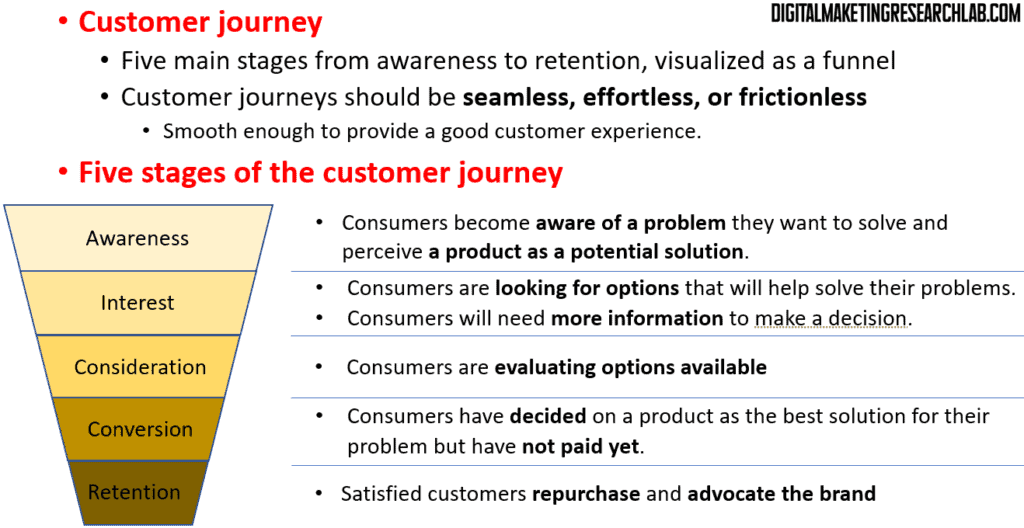
In order to properly address customers at each stage, what should companies do and what are available options. At the awareness and interest stage, companies can provide engaging and interesting content that can solve the consumers’ problems. They also need to develop a strong social media presence and engagement. As marketing tools, companies can utilize content marketing, display and video advertising, and social media, all of which are capable of delivering useful or intriguing information.
At the consideration and conversion stage, companies can optimize content for search engines and invest in paid ads on keywords to serve customers’ specific concerns and address precise questions. Considering that consumers actively search for information needed and evaluate options based on the information, companies must expose proper information to consumers.Thus, recommendable digital marketing tools include search engine optimization (SEO) and paid search.
At the retention stage, companies should collect personal data to create a sense of intimacy and provide a consistent customer experience. Thus, companies need to analyze customer behaviors by using analytics and send automated emails that can serve customers’ needs.

Digital persona
Traditionally, marketers have used customer segments by dividing customers into groups based on some criteria. Instead, personas are representations of archetypical users. For the creation of personas, such factors as demographics, psychographics, and behaviors should be considered. Personas can bring “people to life” in the minds of marketers. Thus, personas allow marketers to put themselves into the shoes of typical customers. It will be more useful to have concrete archetypical users than have an abstract group of customers when markets generate marketing strategies.

Accepting new technology
Digital marketing posits that customers adopt and use new technologies. Then, what does make customers accept a new technology? Davis et al. (1989) introduced Technology Acceptance Model (TAM) to predict a person’s acceptance of new technology. The model considers three major factors, including perceived usefulness, perceived ease of use, and external factors, that have effects on attitude, intention, and behavior. First, customers should perceive that the use of the application will help them perform their job better (perceived usefulness). Second, the application should be easy (perceived ease of use). Finally, when training or guides are available (external factors), customers are more likely to accept new technology.
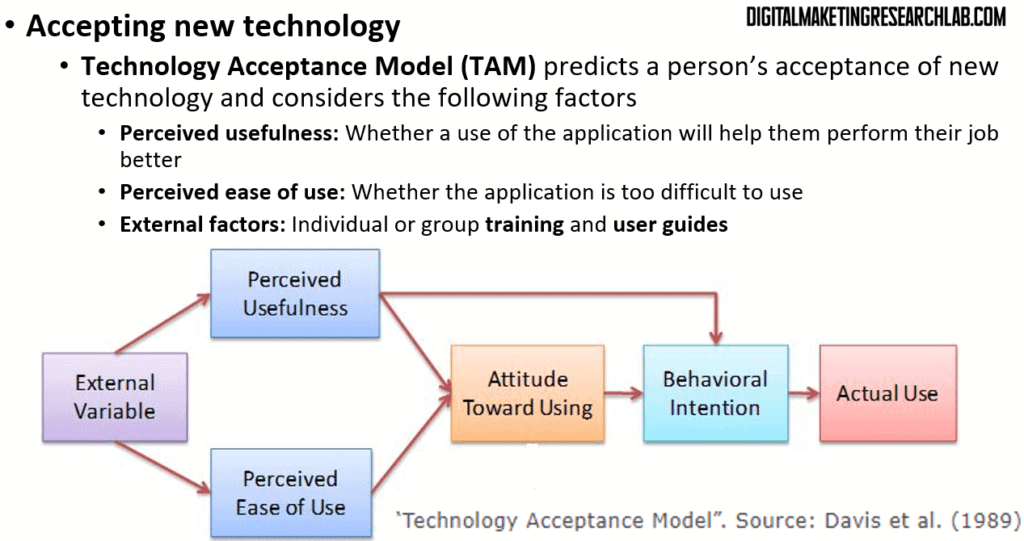
*Reference
Hanlon, A. (2021). Digital marketing: strategic planning & integration. Sage.
Digital Marketing Institute (2021). Introduction to Digital Marketing.